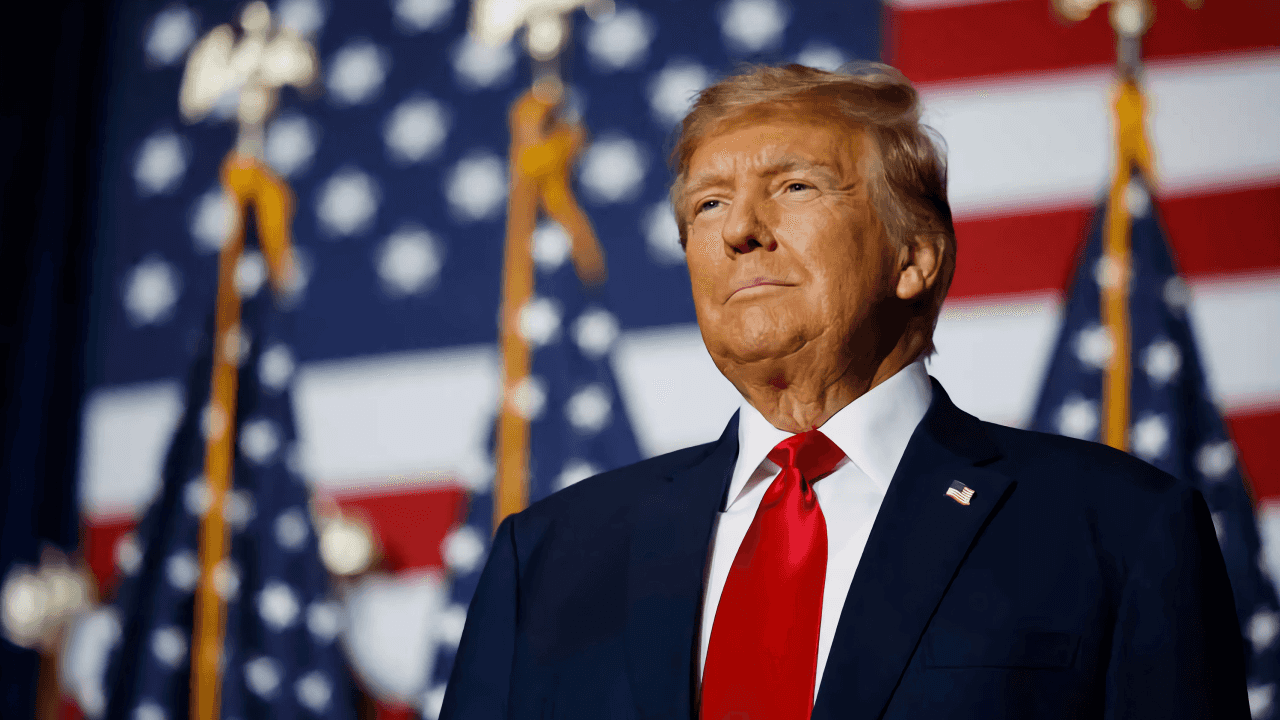News
Donald Trump wins the 2024 election: a look at the new U.S. president’s agenda
Filippo Iachello
4 min

Donald Trump is the new president of the United States
Donald Trump won the 2024 presidential election and returned to the White House. His decisive victory reflects a clear shift in American priorities, with voters drawn to his tough stance on immigration, expansive economic policies, and a more isolationist foreign policy. Trump will officially take office in January 2025, ready to lead with a strengthened Republican majority in Congress. Here’s a closer look at his win and what his administration could mean for America’s future.
How did Donald Trump win the presidency?
The U.S. electoral system is indirect, meaning American citizens do not elect the president directly. Instead, each state appoints a set of “electors” based on population. With 538 total electors nationwide, a candidate needs a majority—at least 270—to win.
In the U.S., most states operate under a “winner-takes-all” rule, meaning that the candidate who receives the majority of votes in a state claims all its electors (with Maine and Nebraska as exceptions). Key swing states—including Arizona, Georgia, Michigan, Nevada, North Carolina, Pennsylvania, and Wisconsin—played a critical role in Trump’s victory. Traditionally unpredictable, these states were ultimately decisive in the election outcome.
The role of swing states in Trump’s victory
Until election night, polling showed a close race, with neither candidate emerging as a clear frontrunner. However, in the early morning, Trump claimed enough swing states to clinch victory. With its 19 electoral votes, Pennsylvania was particularly important, where Trump won by a slim 2% margin. He also secured North Carolina with 51% and Georgia with 50.7%.
Currently, as votes are still being counted in a few remaining states, Trump has a solid lead with 266 electoral votes to Kamala Harris’s 219. He is also leading in other key states, meaning a Trump presidency is almost certain.
Key policies in Donald Trump’s agenda: immigration, economy, and foreign affairs
Now that Trump is set to lead, his platform promises significant changes. Americans voted for a shift in direction, so what does Trump’s agenda entail? His policies have been designed to appeal to a conservative base and are likely to have a broad impact given the Republican majority in Congress. This means he will have substantial freedom to enact his plans, both economically and socially.
Immigration: tighter policies and enforcement
Trump has pledged to take strong action on immigration, a top concern for 61% of Americans. His rhetoric on the campaign trail has been strict, portraying immigrants as a source of crime and economic burden. Trump’s vice president, J.D. Vance, has even suggested that the administration could pursue one of the largest deportation plans in recent history. This policy could lead to a major crackdown on immigration, though Trump will need to consider constitutional protections.
Economy: protectionist policies and crypto-friendly initiatives
On the economic front, Trump has promised protectionist policies, including tariffs aimed at reducing dependence on foreign goods, particularly from China. His approach could lead to what some experts call a “trade war,” potentially impacting international markets and raising prices domestically, which could further strain inflation rates.
Trump’s stance on cryptocurrencies, particularly Bitcoin, has drawn attention. His administration has hinted at using U.S.-held Bitcoin reserves to bolster the national economy and supporting BTC mining in the U.S. The initial market reaction has been positive, with Bitcoin surging to an all-time high of $75,000 following the election news. Some states, like Florida, have already supported Bitcoin, proposing to include it in public pension funds. Other areas, like Michigan and Wisconsin, have begun to invest in Bitcoin ETFs.
Foreign policy: a shift toward isolationism
Regarding international relations, Trump’s foreign policy is expected to take an isolationist approach. He has indicated that he may scale back economic support to Ukraine, potentially destabilising U.S. relations with NATO allies. During Biden’s presidency, the U.S. gave Ukraine approximately $174 billion in aid. Trump’s stance could mean a significant shift, reducing American involvement in global conflicts and focusing on domestic priorities instead.
Trump’s administration has also signalled support for Israel in the Middle East but may reduce the scope of U.S. involvement. His approach could reshape U.S. alliances, especially in Europe, where many countries rely on U.S. support for strategic stability.
What’s next for Trump’s America?
As Donald Trump prepares to re-enter the White House, America is set for substantial changes. His policies on immigration, the economy, and foreign relations reflect a bold vision aimed at strengthening U.S. interests and security, albeit with potential challenges in terms of international diplomacy and market stability.
Stay updated on the latest in U.S. politics and policy changes with Young Platform, where expert insights keep you informed about key developments in America and beyond.




